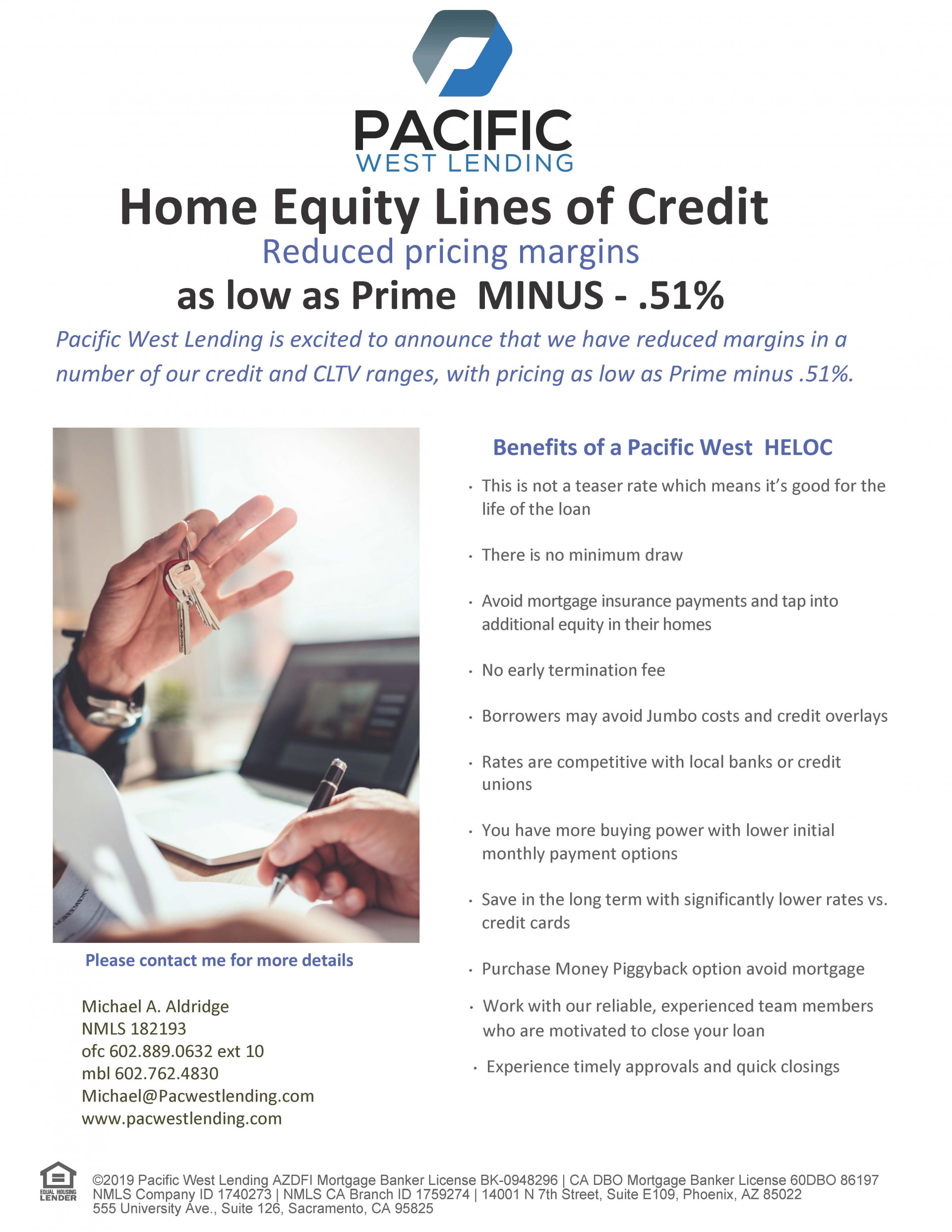Table of Content
Here’s what you need to know about this financing option. Many lenders will ask for your Social Security number or other identification, salary, employment information and estimated home value. Now is also a good time to collect details about your home's outstanding mortgage balance. After you apply, lenders should reach out within a few days, although some online lenders offer same-day approval. With most HELOC lenders, you can generally get theapplication processstarted in just a few minutes online. You’ll simply enter some personal and financial information, such as your name, address, salary, desired loan amount and estimated credit score.

Additionally, borrowers are only obligated to pay interest on HELOCs during the draw period, so monthly payments are lower for a period of time. When the draw period ends, borrowers will have to pay both interest and principal, which will likely significantly raise the monthly payment. Pentagon Federal Credit Union, or PenFed, serves 2 million members in all 50 states, Washington, D.C., and military bases in Guam, Puerto Rico and Okinawa. This credit union offers competitive rates on its HELOCs, along with other financial services, including credit cards, checking accounts, savings accounts, mortgages and auto loans. Like credit cards, HELOCs typically have variable interest rates, meaning the rate you initially receive may rise or fall during your draw and repayment periods.
Plus, get up to $500 cash back!*
Answer some questions about your home equity needs to help us find the right lenders for you. The listings that appear on this page are from companies from which this website receives compensation, which may impact how, where and in what order products appear. This table does not include all companies or all available products. Bankrate does not endorse or recommend any companies.

A home equity line of credit, or HELOC, is a revolving credit line. It’s secured by the equity you’ve built in your home and can be used as needed — like a credit card. You only pay interest on what you draw from your HELOC.
How to get a home equity line of credit
Repayment options may vary based on credit qualifications. Loans are subject to credit approval and program guidelines. Not all loan programs are available in all states for all loan amounts.

HELOCs are loans that allow you to borrow against the equity in your home. Equity is the value of your home minus anything you still owe on it. Typically, lenders will allow borrowers to access between 80% and 90% of their equity. HELOCs are funded through a line of credit that borrowers can access as needed, similar to a credit card.
LOANS AND CREDIT CARDS
The Difference Between Cash-Out Refinance And Home Equity Loan Refinancing - 4-minute read Patrick Chism - October 11, 2022 Cash-out refinance or home equity loan? If the real estate values decrease, your home market value could also decrease. You may then owe more than what your property is worth. If you’re planning to sell your home during this time, you may lose money on the sale. This is useful if you have a project with a fixed cost that you need to cover upfront, like if you’re replacing your roof.
The index, and consequently the HELOC interest rate, can move up or down. Acash-out refinancereplaces your current home mortgage with a larger home loan. The difference between the original mortgage and the new loan is disbursed to you in a lump sum. Typically lower upfront costs than with home equity loans. Large purchases - Because HELOCs have longer repayment periods than many loans, they may be an attractive choice for making large purchases. Lower charges a 1 percent origination fee on all HELOC transactions, so you may want to limit your spending.
home equity
The $50 annual fee applies to draws over $50,000, and if you pay off and close the account within 24 months, you may have to pay a 2 percent termination fee (max $450). There’s a $99 origination fee, and you may have to pay closing costs on certain accounts. Keep credit card balances low and pay everything on time before you apply for a HELOC.

Some borrowers prefer to make regular principal and interest payments to reduce their loan balance. However, the interest-only option comes in handy if you need short-term payment savings and plan to pay off the balance quickly. A HELOC is a revolving line of credit that can be accessed as much as needed during the draw period without reapplying. You have a credit limit that’s determined by the equity in your home and how much of the available credit you’ve used. A home equity loan, on the other hand, is an installment loan with a set amount borrowed and a fixed payment schedule.
Reverse mortgage - With a reverse mortgage, you receive an advance on your home equity that you don't have to repay until you leave the home. However, these often come with many fees, and variable interest accrues continuously on the money you receive. Lenders may charge a variety of fees, including annual fees, application fees, cancellation fees or early closure fees. HELOCs offer a combination of relatively low interest rates and the flexibility to borrow what you need when you need it.

If you opt out, though, you may still receive generic advertising. In addition, financial advisors/Client Managers may continue to use information collected online to provide product and service information in accordance with account agreements. For example, say your home's appraised value is $200,000. If you still owe $120,000 on your mortgage, you'll subtract that, leaving you with the maximum home equity line of credit you could receive as $50,000. An index is a financial indicator used by banks to set rates on many consumer loan products. Prime Rate as published in The Wall Street Journal as the index for HELOCs.

No comments:
Post a Comment